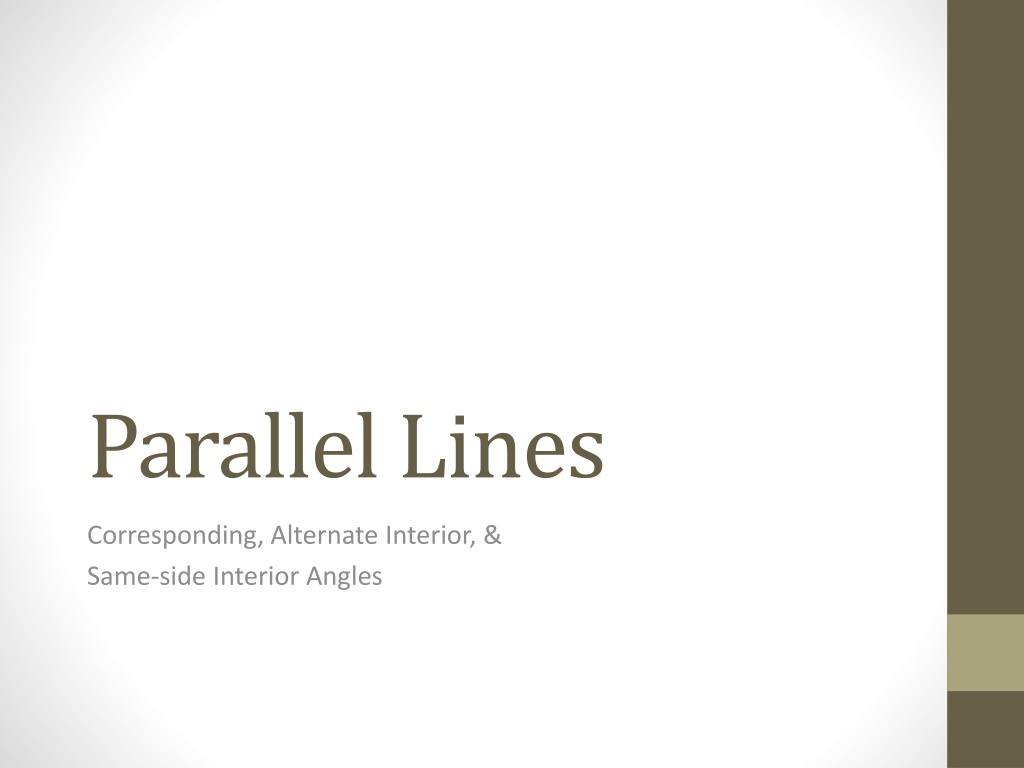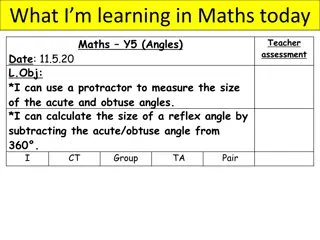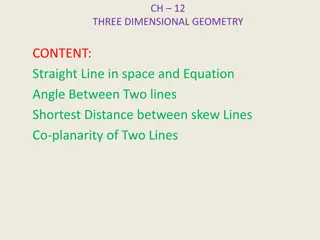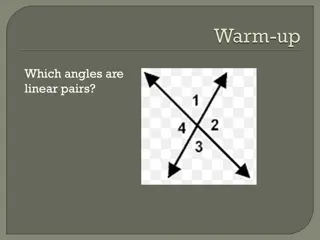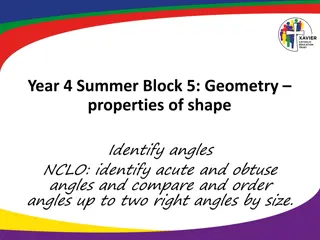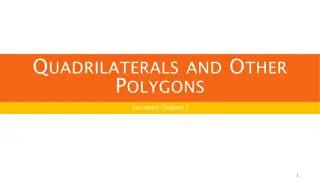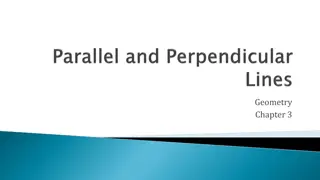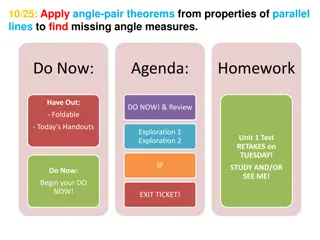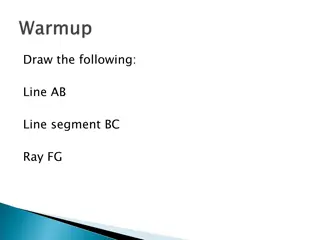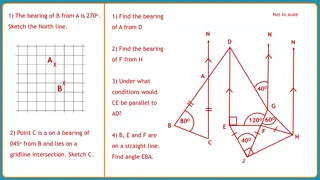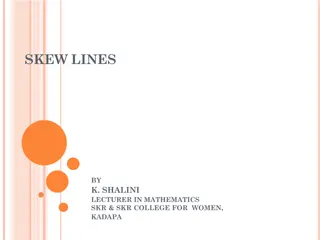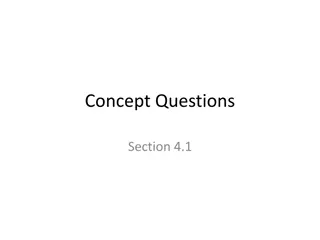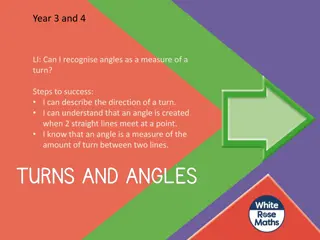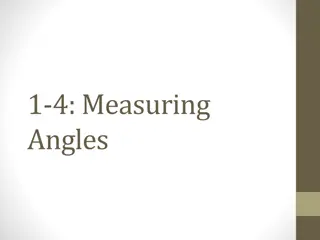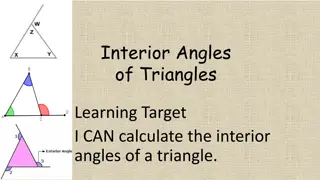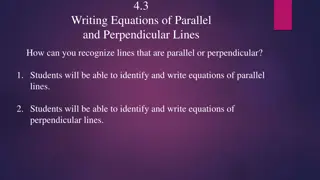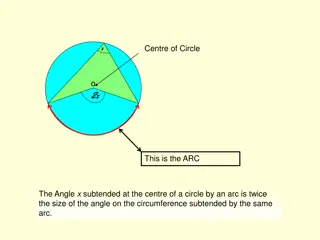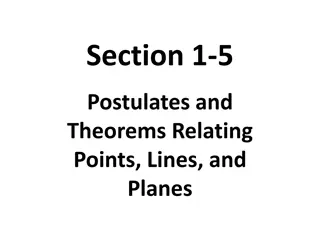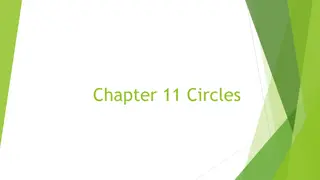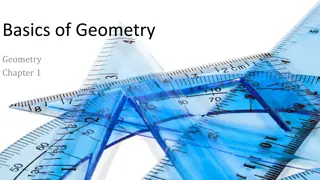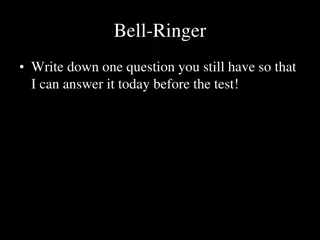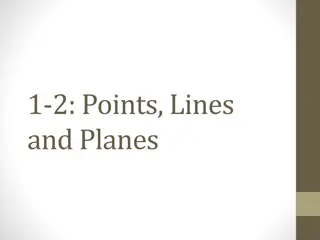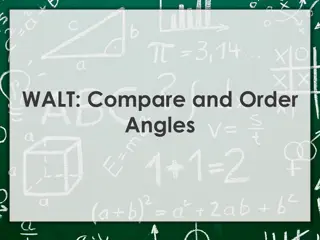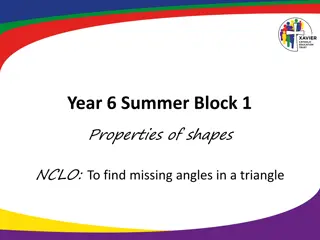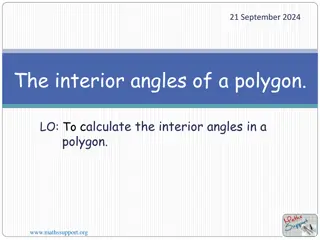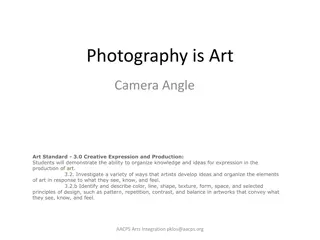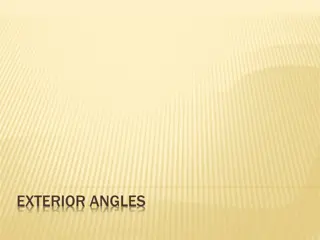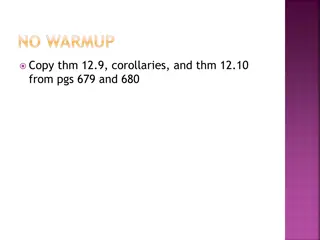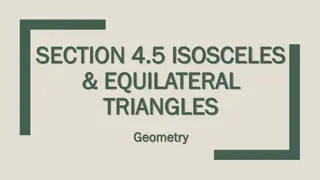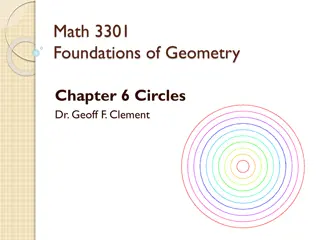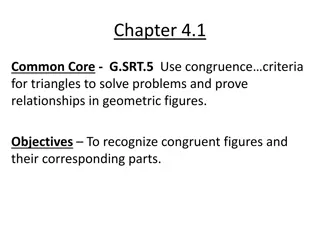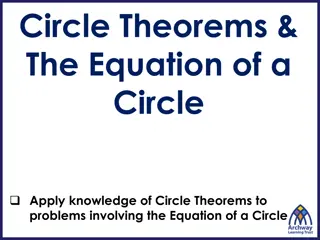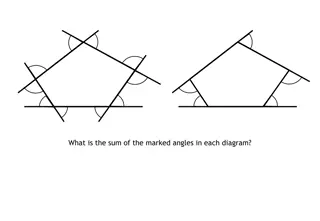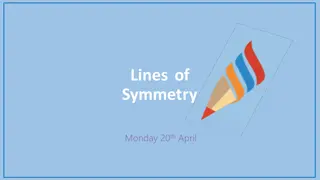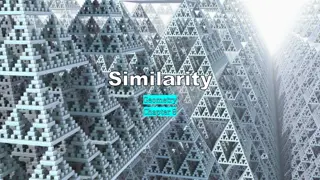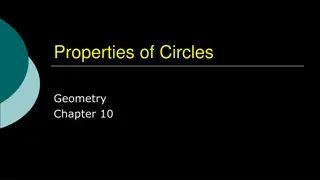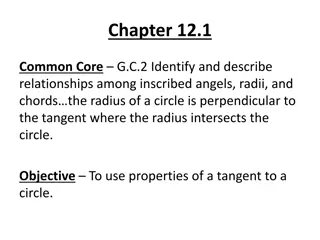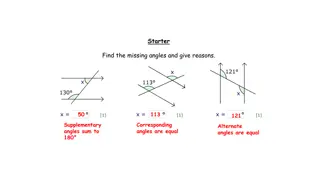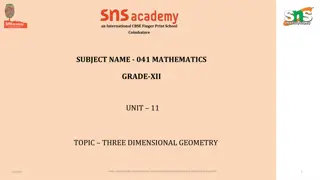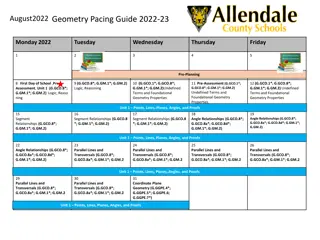Understanding Angles and Lines in Geometry
Explore the concepts of parallel and skew lines, parallel planes, transversals, and angle relationships such as corresponding, alternate interior, and same-side interior angles. Learn to classify pairs of angles as either alternate interior, same-side interior, or corresponding. Practice identifying angles and lines in various geometric configurations.
Download Presentation

Please find below an Image/Link to download the presentation.
The content on the website is provided AS IS for your information and personal use only. It may not be sold, licensed, or shared on other websites without obtaining consent from the author. Download presentation by click this link. If you encounter any issues during the download, it is possible that the publisher has removed the file from their server.
E N D
Presentation Transcript
Parallel Lines Corresponding, Alternate Interior, & Same-side Interior Angles
Definitions Parallel Lines ( ) ___________________________________ ____________________________________________________ Skew Lines _______________________________________ ___________________________________________________ Parallel Planes ____________________________________ ___________________________________________________ Transversal ______________________________________ ____________________________________________________
Always, Sometimes, or Never? 1. Two lines in the same plane are _____________ parallel. 2. Two lines in the same plane are _____________ skew. 3. Two noncoplanar lines _____________ intersect. 4. Two planes _____________ intersect. 5. A line and a plane _____________ have exactly one point of intersection. 6. If two planes do not intersect, then they are _____________ parallel.
Name the two lines and the transversal that form each pair of angles k l 1. A.) 1 and 2 2 n 1 B.) 2 and 3 3 a 2. A.) 4 and 5 b 4 B.) 4 and 6 5 c d 6
Name the two lines and the transversal that form each pair of angles B C D 42 1. A.) 1 and 2 B.) 2 and 3 1 3 A E G 2. A.) 5 and 6 H 7 B.) 7 and 8 86 5 I F K J
x y Angles t 1 8 2 7 3 4 6 5 Exterior Angles Interior Angles Alternate Interior Angles Same-Side Interior Angles Corresponding Angles
Classify each pair of angles as alternate interior angles, same- side interior angles, or corresponding angles. 1. 2 and 4 2. 7 and 12 3. 10 and 11 4. 5 and 10 5. 14 and 15 a b 6. 3 and 11 c 3 7 4 8 2 1 5 6 9 10 11 15 12 d 13 14 16
Classify each pair of angles as alternate interior angles, same- side interior angles, or corresponding angles. 1. ??? and ??? U V W X 2. ??? and ??? S Y 3. ??? and ??? T Z Q P R 4. ??? and ??? 5. ??? and ??? 6. ??? and ??? 7. ??? and ??? 8. ??? and ???
3-2 Properties of Parallel Lines
Properties of Parallel Lines 1. If two _________________ lines are cut by a _________________, then corresponding angles are _________________. 2. If two _________________ lines are cut by a _________________, then alternate interior angles are _________________. 3. If two _________________ lines are cut by a _________________, then same-side interior angles are _________________. 4. If a _________________ is perpendicular to one of two _________________ lines, then it is _________________ to the other one also.
State the postulate or theorem that justifies each statement. a b 1 3 4 1. 3 7 j 6 5 2 7 8 2. ? ? k 3. ? 6 + ? 7 = 180 4. 6 8 - (Arrowheads) Used to represent parallel lines
State the postulate or theorem that justifies each statement. a b 1 3 4 1. 4 6 j 6 5 2 7 8 2. 1 2 k 3. ? 5 = ? 7 4. 5 is supplementary to 8
Understanding Properties of Parallel Lines 1. Name seven angles that must be congruent to 1. 2. Name the eight angles that must be supplementary to 6. 3. If ? 5 = 60, what are the measures of the other numbered angles? 1 5 9 13 2 6 10 14 3 7 11 15 4 8 12 16
Complete 1. If ? 2 = 80, then ? 6 = _______ and ? 7 = _______. 2. If ? 9 = 105, then ? 10 = _______ and ? 16 = _______. 3. If ? 8 = 85, then ? 16 = _______ and ? 10 = _______. 4. If ? 15 = 95, then ? 8 = _______ and ? 1 = _______. 12 11 9 4 1 2 10 3 16 15 13 8 5 14 7 6
Complete 1. If ? 3 = ? 4 + 30, find ? 5. 2. If ? 16 = ? 13 20, find ? 11. 12 11 9 4 1 2 10 3 16 15 13 45 5 14 7 6
Reminder! If two parallel lines are cut by a transversal, then Corresponding angles are congruent, Alternate Interior angles are congruent, and Same-Side Interior angles are supplementary If a transversal is perpendicular to one of two parallel lines, then it is perpendicular to the other one also.
Find the values of x and y. 1. 3y 6y 5x 2. 5y 8x 4x
Find the values of x and y. 3. 140 y (2x+10) 4. x 40 y 70
Find the values of x and y. 5. 65 x y 55 6. x 50 y 40
Find the values of x, y, and z. 7. y 30 x 42 6z 8. (3z+8) (4y+14) 70 x
Find the values of x, y, and z. 9. 5z 3x 60 (2y+10) 10. 2z 5y 40 x
1. 1 8 k j 2. 4 6 3 4 5 3. 10 7 2 l 1 6 4. ? 3 + ? 4 = 180 8 7 n 9 10 5. 5 3 p 6. 6 7 In each exercise, some information is given. Name the lines (if any) that must be parallel. If there are no such lines, write none.
1. 1 3 2. 1 4 P N 3. 2 5 1 2 3 4. 3 5 R O 4 5. 4 is supplementary to 5 5 T S In each exercise, some information is given. Name the lines (if any) that must be parallel. If there are no such lines, write none.
1. 2. 3. j (3x+10) 6x (5x+15) 75 3x (5x-10) k j k j k Find the value of x that makes ? ?
B C A A B C 1. 2. (3x+2) (4x+5) (3y-1) (5y-7) (4x-18) (5x-13) F E D D E F Find the values of x and y that make ?? ?? and ?? ??
